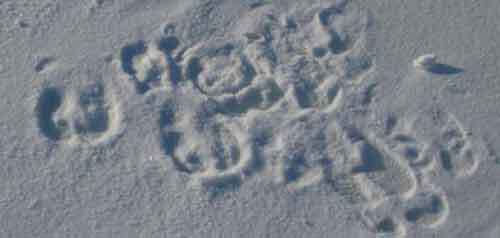


Scientific journeys move smoothly across the North
Traverses across the bumps of the frozen northern landscape are not easy, but two scientific teams I recently wrote about are cruising right along.
University of Alaska Fairbanks permafrost scientist Kenji Yoshikawa and his partner Tohru Saito of the International Arctic Research Center zipped through a trip down the Yukon River with two snowmachines and three sleds. They traveled from Manley Hot Springs to St. Marys in less than two weeks, installing permafrost-monitoring stations at Manley, Galena, Kaltag, Shageluk, Russian Mission, Marshall, and St. Marys. Along the way, they pulled off the trail for head-on passes with the top 10 Iditarod mushers near Eagle Island, and each put about 800 miles on his snowmachine.
“I really liked this trip,” Yoshikawa said when he returned to Fairbanks. “Every night and every day we met new people who helped us out.”
Saito and Yoshikawa would drive between villages, sometimes in air as cold as minus 40, or along a river surface more like sand than snow.
“Kenji likes the desert so I’m sure he was having a good time,” Saito wrote in the team’s blog at http://www.uaf.edu/permafrost/ about the trip from Holy Cross to Russian Mission.
Once the team got to a village, they would hustle to find a good spot, drill a permafrost hole, set up a data logger, and instruct village teachers on how to download the temperature information about the frozen soil. They often spoke to students, and then caught a bit of sleep on classroom floors before continuing on the next cold morning.
Yoshikawa expects to get good measurements from the seven villages in early May. In the meantime, he and Saito are continuing their travels. They installed two more permafrost observatories in Arctic Village and Fort Yukon after traveling there by plane, and Yoshikawa has snowmachine trips planned to the Kobuk and Noatak river drainages in April.
On a long journey eastward along the Arctic Circle, Matthew Sturm of the Cold Regions Research and Engineering Laboratory at Fort Wainwright and his four partners have made it from Fairbanks to the Mackenzie River drainage. They reached Fort McPherson in Canada on March 28th, after 13 days on the trail. Dave Anderson, their base camp manager in Fairbanks, said the group has done well after Jon Holmgren and a local man in Old Crow repaired the clutch assembly on Dan Solie’s machine.
On their Web site, http://www.barrenlands.org, designed by Sturm’s daughter Skye and updated daily by Anderson, Sturm gives audio updates from the trail. On March 28th, he described a geographic milestone:
“Today was a phenomenal, beautiful run…we climbed up and over the white, shining Richardson Mountains, and dropped into the Mackenzie Basin. This is one of the major drainage divides in the Arctic, and the world. The Yukon flows into the Bering Sea, the Mackenzie into the Arctic Ocean.”
In their nightly written dispatch, Sturm’s crew described seeing thousands of caribou on their spring migration from the high country to the coastal plain of Canada and Alaska. They mused on the graceful design of caribou.
“Caribou are remarkably well adapted to the Arctic,” one of them wrote. “They walk and trot very efficiently, which means they need much less energy to move than a person would.”
Anderson said the trip and the Web site have sparked lots of interest, with schoolchildren from across the United States following the trip.
“We’ve got kids from 10 states now, and teachers from all grade levels tracking the trip,” he said. “I get up in the morning to a half dozen emails asking questions about the trip.”
Anderson said the group is a few days behind schedule due to harder-than-expected travel between Chena Hot Springs and Circle, but the men feel great about their progress. The adventurers expect to be riding until early May, when they will reach the village of Baker Lake near Hudson Bay.







